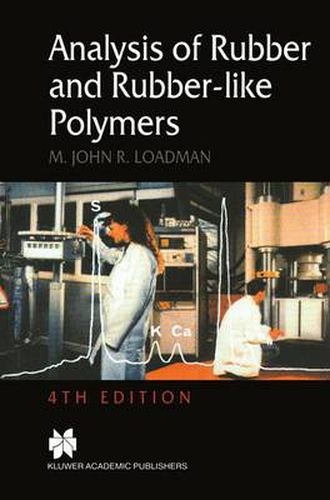Readings Newsletter
Become a Readings Member to make your shopping experience even easier.
Sign in or sign up for free!
You’re not far away from qualifying for FREE standard shipping within Australia
You’ve qualified for FREE standard shipping within Australia
The cart is loading…






This title is printed to order. This book may have been self-published. If so, we cannot guarantee the quality of the content. In the main most books will have gone through the editing process however some may not. We therefore suggest that you be aware of this before ordering this book. If in doubt check either the author or publisher’s details as we are unable to accept any returns unless they are faulty. Please contact us if you have any questions.
The first edition of this book (1958) described an analytical situation which had existed for a number of years for maintaining quality control on vulcanizates of natural rubber although the situation had recently been disturbed by the introduction of a range of synthetic rubbers which required identification and quantitative estimation. For the former purpose ‘wet’ chemistry, based on various imperfectly understood organic reactions, was pressed into service. Alongside this was the first introduction of instrumental analysis, using the infrared spectra of either the polymers or, more usually, their pyrolytic products to ‘fingerprint’ the material. The identification of a range of organic accelerators, antioxidants and their derivatives which had been intro duced during the 1920s and 30s was, in the first edition, dealt with by a combination of column chromatography and infrared spectroscopy or by paper chromatography. Quantitative procedures were, however, still classical in the tradition of gravimetric or volumetric assays with an initially weighed sample yielding, after chemical manipulation, a carefully precipitated, dried and weighed end product, or a solution of known composition whose weight or titre, as a percentage of the initial sample, quantified the function being determined. The second edition of this work (1968) consolidated the newer techni ques which had been introduced in the first without adding to them although, in other applications of analytical chemistry, instrumental analysis had already brought about a transformation in laboratory practice.
$9.00 standard shipping within Australia
FREE standard shipping within Australia for orders over $100.00
Express & International shipping calculated at checkout
This title is printed to order. This book may have been self-published. If so, we cannot guarantee the quality of the content. In the main most books will have gone through the editing process however some may not. We therefore suggest that you be aware of this before ordering this book. If in doubt check either the author or publisher’s details as we are unable to accept any returns unless they are faulty. Please contact us if you have any questions.
The first edition of this book (1958) described an analytical situation which had existed for a number of years for maintaining quality control on vulcanizates of natural rubber although the situation had recently been disturbed by the introduction of a range of synthetic rubbers which required identification and quantitative estimation. For the former purpose ‘wet’ chemistry, based on various imperfectly understood organic reactions, was pressed into service. Alongside this was the first introduction of instrumental analysis, using the infrared spectra of either the polymers or, more usually, their pyrolytic products to ‘fingerprint’ the material. The identification of a range of organic accelerators, antioxidants and their derivatives which had been intro duced during the 1920s and 30s was, in the first edition, dealt with by a combination of column chromatography and infrared spectroscopy or by paper chromatography. Quantitative procedures were, however, still classical in the tradition of gravimetric or volumetric assays with an initially weighed sample yielding, after chemical manipulation, a carefully precipitated, dried and weighed end product, or a solution of known composition whose weight or titre, as a percentage of the initial sample, quantified the function being determined. The second edition of this work (1968) consolidated the newer techni ques which had been introduced in the first without adding to them although, in other applications of analytical chemistry, instrumental analysis had already brought about a transformation in laboratory practice.